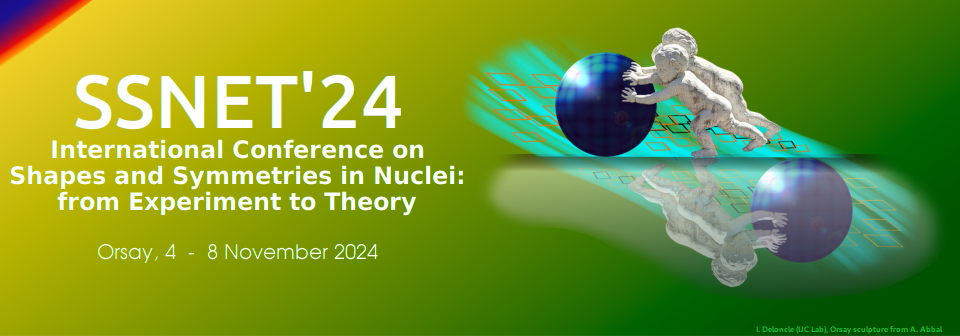Orateur
Description
A central motivation for the program of ultra-relativistic nuclear collisions is to access bulk properties of QCD matter that emerge in conditions similar to those found in the early Universe or in extreme astrophysical objects. A prime example is the quark-gluon plasma (QGP), the hot phase of QCD matter that behaves like a near-perfect fluid. The spatio-temporal evolution of the QGP can be well described within the relativistic hydrodynamic framework [1]. In particular, the spatial anisotropy of the intial condition of the QGP plays a major role in its subsequent evolution and translates, in fine, in an anisotropy of the momentum distribution of the emitted particles later observed in experimental detectors.
It turns out that nuclear deformation, an emergent phenomenon well studied in nuclear structure, participates in the creation of this initial spatial anisotropy. Indeed, in the most central collisions, i.e, collisions with a very small impact parameters, nuclear deformation strongly accentuates the asymmetry of the overlap region between the two colliding nuclei where the QGP is formed. For example, the quadrupole deformation of the colliding ions can be directly linked to an excess of elliptic flow in the distribution of observed charged hadrons compared to a spherical baseline. Therefore, a good description of the spatial arrangement of nucleons inside the nucleus is of interest in the determination of the initial conditions of ultra-relativistic nuclear collisions.
In this talk, I will present some recent theoretical efforts to generate these initial conditions from state-of-the-art nuclear structure calculations [2]. Also, I will show how our knowledge of nuclear deformation can be used to better analyze high-energy data [3] as well as propose new experiments [4]. In particular, I will discuss the idea of using the large ground-state deformation of $^{20}$Ne to shed light on the collectivity in small colliding systems [4].
[1] Ollitrault, Eur. Phys. J. A, 59, 236 (2023).
[2] Bally et al., Eur. Phys. J. A, 59, 58, (2023).
[3] Bally et al., Phys. Rev. Lett., 128, 082301 (2022).
[4] Giacalone et al., arXiv:2402.05995 (2024)

